As I mentioned in my reading resolutions, one of my goals this year is to follow up on authors that I’ve enjoyed before. While I do love discovering new writers, there’s also a comfort in revisiting favorites. So today’s stack includes books that are part of a series—do note that in some cases that may mean potential spoilers, though I’ll try to avoid that as much as possible.
Normally I arrange my Stack Overflow columns roughly in order of reader age, starting with picture books and going up to books for adults, but this week I’m starting with a middle grade novel because I want to make sure it doesn’t get missed:
The Thief Knot by Kate Milford
Kate Milford’s Greenglass House series has been one of my favorites in the past few years: it’s about an old rambling house in Nagspeake that used to belong to a smuggler, the sometimes shady dealings that happen there, and the kid who currently lives in the house. It has mysteries, role-playing games, and mysterious characters with mysterious pasts. It’s also a story built upon stories: the books include characters telling tales, and you get to piece together what’s true and what’s been stretched a bit in the telling. Milford has two other series that interweave with the Greenglass House books, too, so if you read them all, you’ll see the ways that they’re linked. (Check out my Q&A with Milford from two years ago!)
The Thief Knot is the third book in the Greenglass House series, and focuses on one of the characters introduced in Ghosts of Greenglass House. Marzana lives in the Liberty of Gammerbund, a part of the city where a lot of the usual rules don’t apply (and is therefore a haven for many people who aren’t entirely welcome elsewhere). Despite that, Marzana and her best friend Nialla complain that nothing ever happens in the Liberty, and their attempts at espionage never turn up anything exciting. That is, until somebody shows up asking Marzana’s parents for help solving a kidnapping case.
This book takes place almost entirely in the Liberty, so it’s mostly a different cast of characters than the previous books in the series. A lot of the story takes place in and around Marymead, the middle school Marzana and Nialla attend (pictured on the cover), but they also venture out into other parts of the city. I really enjoyed the mystery-solving, but mostly the stories: we hear about a book series that Marzana and Nialla are reading that is full of puzzles and clues that I think must be on Milford’s list to write someday, as well as a comic book series that the kidnapped girl was known to be reading. We also get some stories told by various characters about smuggling exploits from their time before the Liberty.
Marzana also deals with severe social anxiety: although she becomes the leader of this team of kid sleuths, she’s constantly second-guessing herself and wondering if she said the right things. Although I don’t struggle with that myself, I appreciated the way Milford opened a window into what that is like, and also showed how Nialla supported Marzana as a friend. There are several other kids who come into the story, each with their own strengths and quirks, but I won’t give too much more away.
If you haven’t experienced the Greenglass House books yet, I highly recommend them! My whole family has enjoyed them (to the point that when my advance copy of The Thief Knot arrived, there was a lot of fighting over who got to read it next), and The Thief Knot is a fantastic addition to the series. If you’re already a fan, you’ve got an exciting read to look forward to. The Thief Knot releases tomorrow (Tuesday, January 14), so add it to your list!
Ok, now on to the picture books:
You Loves Ewe! by Cece Bell
This book is a sequel to I Yam a Donkey! (see this Stack Overflow), a picture book about grammar featuring a silly donkey and a pedantic yam. This time, there’s a fluffy sheep named Ewe—which of course leads to all sorts of confusion when Donkey can’t tell the difference between “you” and “ewe.” The book is done in a comic-book style, with panels and speech bubbles, and it’s a fun way to teach young readers about homonyms.
Bigger Words for Little Geniuses by Susan & James Patterson, illustrated by Hsingping Pan
Cuddly Critters for Little Geniuses by Susan & James Patterson, illustrated by Hsingping Pan
Bigger Words for Little Geniuses (a followup to Big Words for Little Geniuses) is not your typical ABC book. Instead of words like “apple,” “ball,” and “cat,” you get “ailurophile,” “bioluminescent,” and “chasmophilous.” Each word is presented with a pronunciation guide and a short sentence that explains its meaning (and usually includes another word or two starting with the same letter). Pan’s illustrations are colorful and cheery, helping to convey the word’s meaning.
Cuddly Critters isn’t arranged alphabetically, but categorizes a variety of animals by land, air, and sea. It includes well-known animals like the scarlet macaw and hedgehog to lesser known species like the blanket octopus and the gerenuk, again paired with Pan’s fun illustrations. Each animal includes a brief description (though no pronunciation guide).
A Stone Sat Still by Brendan Wenzel
Wenzel’s first book, They All Saw a Cat, depicted the same cat as seen by various creatures throughout the day, showing how our perceptions can affect what we see. In A Stone Sat Still, we observe a stone over a long period of time and see the contradictions in the way various creatures might see it. It can be loud or quiet, dark or bright, a home for some and a danger for others. It’s a beautiful, poetic book, and I like the way that it focuses on the stone while the world shifts and moves around it, and also the way that Wenzel shows that even something that seems as unchanging as an unmoving stone is filled with possibilities and diversity.
Dr. Seuss’s Horse Museum written by Dr. Seuss, illustrated by Andrew Joyner
This picture book is actually a non-fiction book about art that Dr. Seuss had started but never finished or published. His wife Audrey Geisel discovered the manuscript and sketches in 2013, and now it’s been published, with illustrations by Andrew Joyner. In the book, a cheerful horse takes a couple of kids through an art museum and shows how different artists throughout history have depicted horses: in drawings, sculptures, and photographs. He shows how some people look at a horse and see beautiful lines, and others see colors, and others see speed. The book includes reproductions of these various horse depictions (with further details at the back of the book).
I like the way that the book gives readers an idea about how to look at the world from different perspectives, and also because of the way it reveals a little more about Dr. Seuss himself, too. The publisher’s note at the back of the book gives some more details about how the book came about: it turns out that Dr. Seuss had made a half-hour educational show about modern art, but unfortunately the footage for that has been lost. This book seems to cover a lot of the same material.
Andrew Joyner’s artwork captures some of the same energy as Dr. Seuss’s illustrations, without trying to reproduce his style. I appreciated that Joyner didn’t just try to copy Dr. Seuss, because that generally doesn’t turn out looking right. Instead, this book calls to mind Dr. Seuss’s style, while looking at things in its own way. I think Dr. Seuss’s Horse Museum is a great resource for young readers to learn a little about art and perspective, and may spark further research.
T. Rex Time Machine: Dinos in De-Nile by Jared Chapman
The time-traveling T. Rexes are back at it after their initial foray to our present, and this time they’ve wound up in ancient Egypt, where one T. Rex is mistaken for Sobek, the crocodile-headed god of the Nile. King Tut is thrilled to meet “Sobek” and treats them to the best Egypt has to offer … until the aliens show up. It’s a short, silly romp through Egypt, though don’t expect it to be historically accurate. As a bonus, the inside of the dust jacket is a comic about The Mighty Sobek. (King Tut is a fan, of course.)
Fox + Chick: The Party and Other Stories by Sergio Ruzzier
This picture book has a comic book format, featuring an unlikely pair of friends: Fox and Chick. There are three brief stories, all slightly silly. “The Party” is about Chick showing up to Fox’s house and asking to use the bathroom, with hilarious results. In the second story, Fox attempts to make “Good Soup” while Chick pesters him about the things that foxes should eat. Finally, in the third story we see that Chick simply cannot “Sit Still” for a portrait. It reminds me a little of books like Frog and Toad, particularly the way that Fox and Chick banter with each other.
Mac B., Kid Spy: Top Secret Smackdown by Mac Barnett, illustrated by Mike Lowery
Mac B., Kid Spy: Mac Cracks the Code by Mac Barnett, illustrated by Mike Lowery
Mac B. continues his exploit as a spy for Queen Elizabeth in the next two volumes of Mac B., Kid Spy. In Top Secret Smackdown, the ravens from the Tower of London have been stolen! And also, Craig (Mac’s mom’s boyfriend) is really into pro wrestling, which (believe it or not) plays a significant role later in the plot. In Mac Cracks the Code, Mac learns about portmanteaus, dreams of going to the Video Game World Championships, and tries to crack a mysterious code: DRUBBALUBBA.
These books are silly and unrealistic, but I love the way Barnett manages to weave running gags throughout each book that pay off at the end. The interactions between Mac and the Queen (and her corgis) are always entertaining, and Mac’s understanding of the world as a kid often leads to amusing results. I have to admit: I do kinda wish Barnett were writing more Brixton Brothers books (which featured a kid detective and a lot of the same absurd humor, but for a somewhat higher reading level) but I’m glad that younger readers can get a taste of Mac’s excellent spycraft through these books, too.
Gamayun Tales 3: Tyna of the Lake by Alexander Utkin
The Gamayun Tales are a comic book series inspired by Russian folklore, and although each book focuses on a particular story, they’re tied together in an overarching plot line as well. (I mentioned the first two volumes in this Stack Overflow.) This volume focuses on Tyna, one of the daughters of Vodyanoy, a water spirit. In the previous books, Vodyanoy had tricked a merchant into pledging his firstborn son, but before the time came to collect him, the boy had befriended Tyna, who promised to help. Her craftiness allows him to keep some of his independence, and he comes to thrive in the underwater kingdom. In the meantime, though, Tyna begins to feel that all is not right, and her relationships with her father and sisters takes an unexpected turn.
I’ve really been enjoying these books. They have twists and turns that feel familiar because they follow fairy tale rules, but the story itself is new to me and I don’t know exactly what’s around the next corner. The illustrations have an age-old quality to them that matches the tales.
Star Scouts 3: The Invasion of the Scuttlebots by Mike Lawrence
The third book in the Star Scouts series has Avani and Pam facing their biggest challenge yet: integration. The various aliens in this universe fall into two categories: oxygen-breathers and methane-breathers. (Yes, it’s pretty convenient that there are only two.) The two groups had always been segregated—at least one group has to wear a helmet, depending on the atmosphere—and that led to a lot of rivalry and “us vs. them” mentality among the scouts. When Avani and Pam became friends, the academy decided it was finally time to fully integrate the scouts.
Unfortunately, Avani’s friendship with Pam hasn’t been such a great deal for Mabel, who is feeling jealous and left out. This eventually (I’ll omit the details) leads to an accidental robot invasion of Earth, which the Star Scouts have to defeat. There’s definitely a lot going on in this book aside from zany shenanigans (of which there are plenty): shifting relationships in adolescence are tricky, even when aliens aren’t involved, and so is working with people (or aliens) who aren’t like you. We even get to see some of the Flower Scouts from the first issue and learn that maybe they aren’t so bad after all (even if their taste in music is atrocious). This volume seems to be wrapping up Avani’s story, though it doesn’t completely shut the door for other stories of Star Scouts in the future.
Cleopatra in Space 5: Fallen Empires by Mike Maihack
And here’s another comic book series about a spunky girl whisked off into space (by a cartoonist named Mike). This volume digs a little more into Xaius Octavian’s history—how did he become a ruthless dictator? In the previous volumes, we got hints that Octavian was actually Cleopatra’s best friend in ancient Egypt before she got zapped into the far future, and this volume shows the path that he took.
In the meantime, Cleopatra and her friends continue working to protect Yasiro Academy from Octavian’s armies, even as they’re blamed for a mysterious death and become fugitives from the law. They must track down the traitor in their midst in time to prevent Octavian’s assault.
This series is written for kids, and has a lot of action and humor, but this volume also goes to some dark places. Octavian’s story is told in a series of flashbacks that are brief, but terrible. It’s not clear whether there will be some sort of redemption arc for him, or if he’s simply too far gone.
Guts by Raina Telgemeier
Raina Telgemeier returns to her autobiographical roots (starting with Smile and Sisters) in this comic book, which focuses on her anxiety starting around fourth grade. After some sort of bug that resulted in vomiting, Raina developed a phobia about vomiting. She also started having anxiety attacks that manifested as stomach pains, though doctors weren’t able to find anything wrong with her. On top of that, Raina was also navigating the difficult world of relationships: her best friend, Jane, is starting to become friends with Michelle, a girl who always seems to be picking on Raina—and that just causes more anxiety.
The book follows Raina through some difficult times, but eventually she starts seeing a therapist who is able to start getting to the roots of her fears. Raina learns some techniques to use when she’s feeling anxious, and also gets to know Michelle better and has a shift in perspective.
Guts is really well-written, and reminds me a little of Best Friends by Shannon Hale (mentioned here), which also wrestles with tricky friendships and anxiety. For both Raina and Shannon, anxiety seemed like a big unknown at the time, and seeing a therapist felt shameful. I think both of these books are significant in that they help readers understand what it’s like to experience anxiety. For those who suffer from it, it gives them hope that they can learn ways to cope and reassurance that they’re not alone; for those who don’t, it educates them and teaches empathy.
Arc of a Scythe trilogy by Neal Shusterman
I’ve had the first book of this young adult trilogy sitting on my shelf for some time—Scythe was first published in 2016—but I just hadn’t gotten around to reading it. My oldest daughter had read the first two in the series and said she enjoyed them, so when the third book came out this fall I decided I should finally see what it was all about.
So here’s the premise: the world as we know it has changed. When the computing cloud gained sentience, it was dubbed the Thunderhead and eventually put in charge of everything. It handled the economy and government so efficiently that poverty, hunger, and even death itself were eliminated. “Natural” deaths were a thing of the past, and accidental deaths (or murders) were reversible. And that’s where the scythes come in. Because humans no longer died off at a steady pace, the order of scythes was established to cull the population, even though the Thunderhead was able to sustain a much higher population than before. Scythes followed a particular list of rules, but if you were killed by a scythe, you stayed dead. The Thunderhead separated itself from scythe business entirely, concluding that taking a life should be the responsibility of somebody who had lived one.
So that’s the state of the world when the first book begins, and we meet two of the primary characters: Citra and Rowan, two teenagers who have both been apprenticed to Scythe Michael Faraday. (All scythes take on names based on historical figures when they’re initiated.) Neither is particularly interested in becoming a scythe, but Faraday’s philosophy is that anyone who wants to be a scythe should never be entrusted to do the job. This is in stark contrast to Scythe Goddard, who is leading a new guard in the scythedom, claiming that if scythes have been called to kill people for the greater good, then they might as well enjoy it. Goddard lives an extravagant lifestyle, thanks to the way that scythes are respected and feared in society, and his team of scythes takes delight in mass gleanings.
This sets up the primary conflict in the book: the “new guard” versus the “old guard.” Citra and Rowan eventually find themselves being trained by opposing factions, with a planned showdown at the completion of their training: the winner will become a new scythe, and must glean the loser. Since this is a young adult novel, it may come as no surprise to you that the two fall in love, which is another source of turmoil since neither wants the other dead. Throughout the first book, we get a closer look at Goddard and his team through Rowan’s eyes, as Rowan struggles to perform for Goddard without losing hold of his own humanity.
It’s hard to say much more about the second and third books without spoiling the first, but things get considerably more complex. We get to learn more about the Thunderhead itself and how it thinks about the world, and the rift between Goddard and his opposition continues to grow. We also eventually learn more about the Tonists, a cult with its own strange set of rituals and beliefs that often finds itself at odds with scythedom as a whole. While the Tonists played a fairly minor role in the first two books, the third book really digs into their world and their mythology as well.
When reading the first book, I noticed that the politics within the scythedom seemed to reflect American politics to some extent. Those connections became much more apparent in the next two books, where it becomes clear that Goddard’s character and actions are based on what Shusterman thinks of our current president. While you may certainly enjoy the world-building and twists and turns of the plot regardless of your political affiliation, I’m guessing it’ll affect whether you like the implications. (My daughter said she hadn’t really caught the allusions when she read the first two books a while back, but it was hard for me not to miss Goddard’s use of the phrase “make scythedom great again.”) But even though the books seem to be influenced by current headlines, I would guess that arguments about what’s considered abuse of power won’t go away anytime soon, regardless of which party is in power, and so the books may retain their relevance for some time.
Overall, I found the Arc of a Scythe trilogy an engaging, thought-provoking read. Aside from the considerations of humans culling the population (and their varied methods for doing so), there’s a lot of fun speculation about things like sentient AI and space exploration (which was attempted at some point in the book’s past but only got as far as the moon and Mars before disasters shut down the programs). Some of it felt a little heavy-handed at times, but for the most part I enjoyed the ride.
My Current Stack
I’m currently working my way through both new and old books. I’ve started reading The Lonely Polygamist by Brady Udall—my wife read it several years ago and recommended it, and it’s just been sitting on the shelf all this time. I’m almost finished with Exile from Eden by Andrew Smith, a sequel to Grasshopper Jungle, and it’s just as weird and compelling as the first.
Disclosure: I received review copies of the books in this column, except Guts, which I purchased myself.

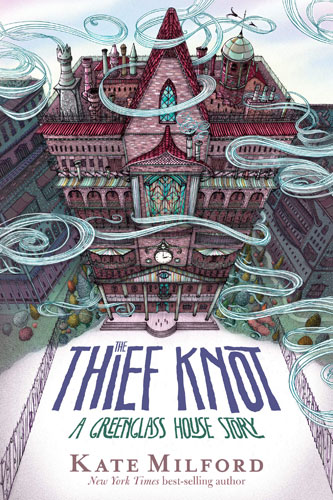

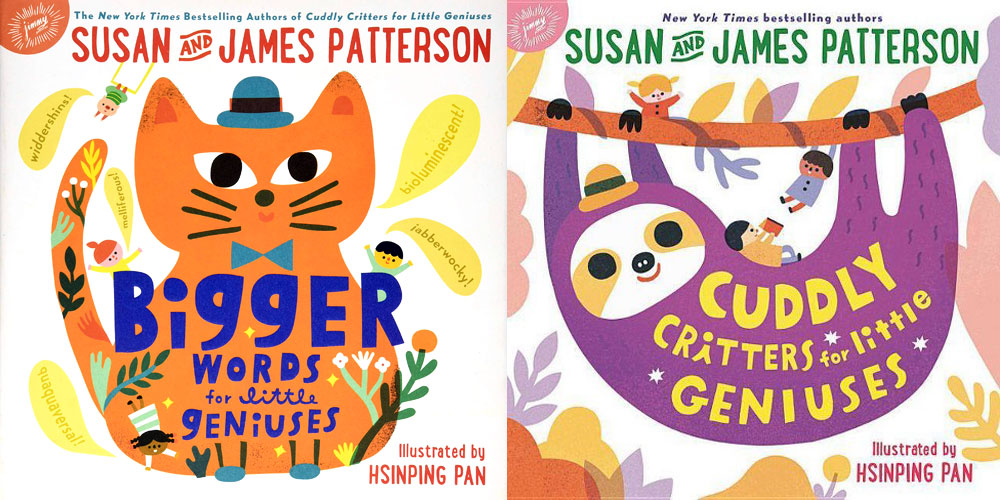




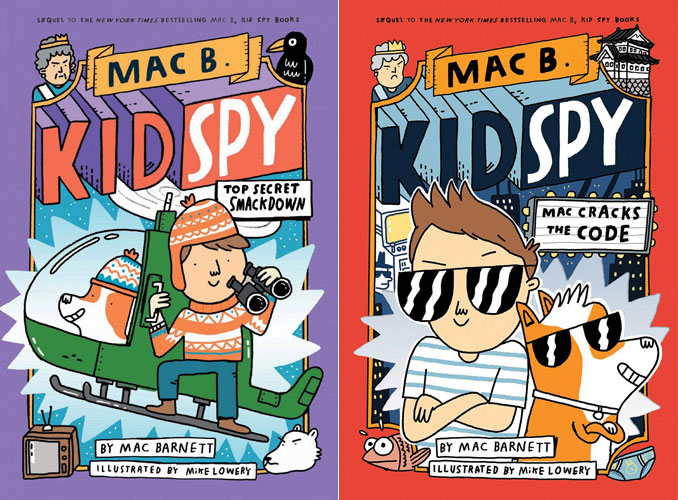


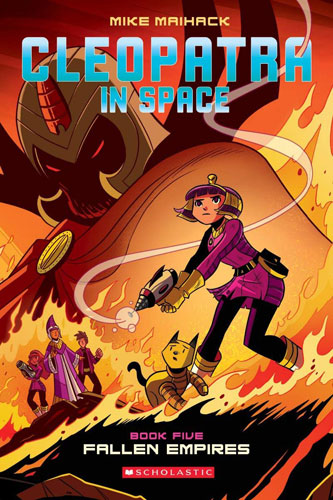
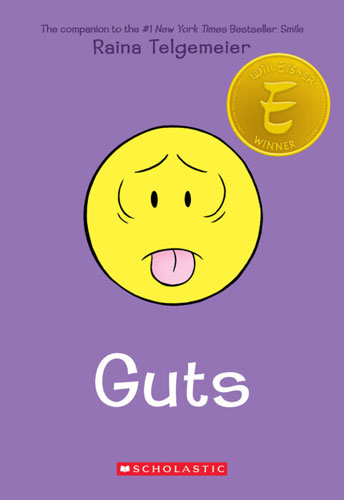
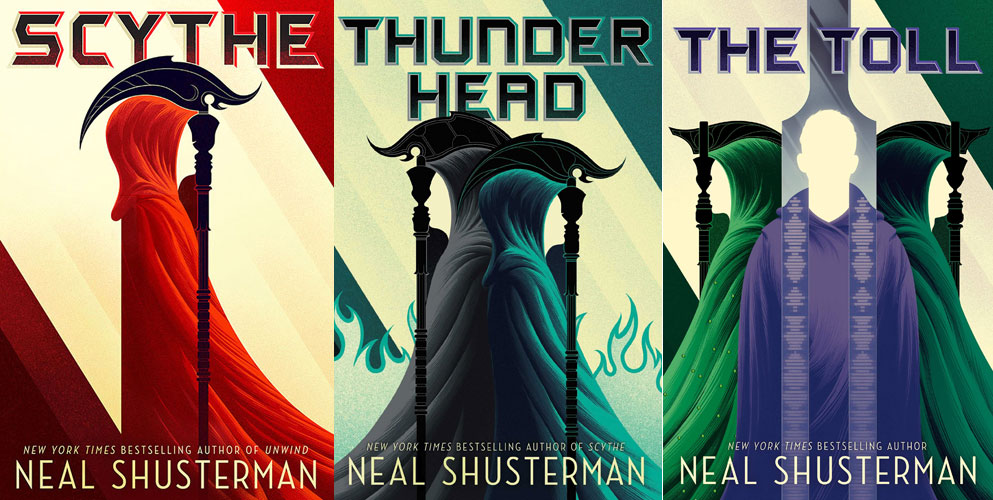




Well, for me part of the secret is this huge stack of books that threatens to crush me if I don’t dig away at it. 😀 Though I don’t know if I recommend that route. I also don’t happen to watch much TV—I’m WAY behind on several series, so I always wonder how people manage to keep up with those.